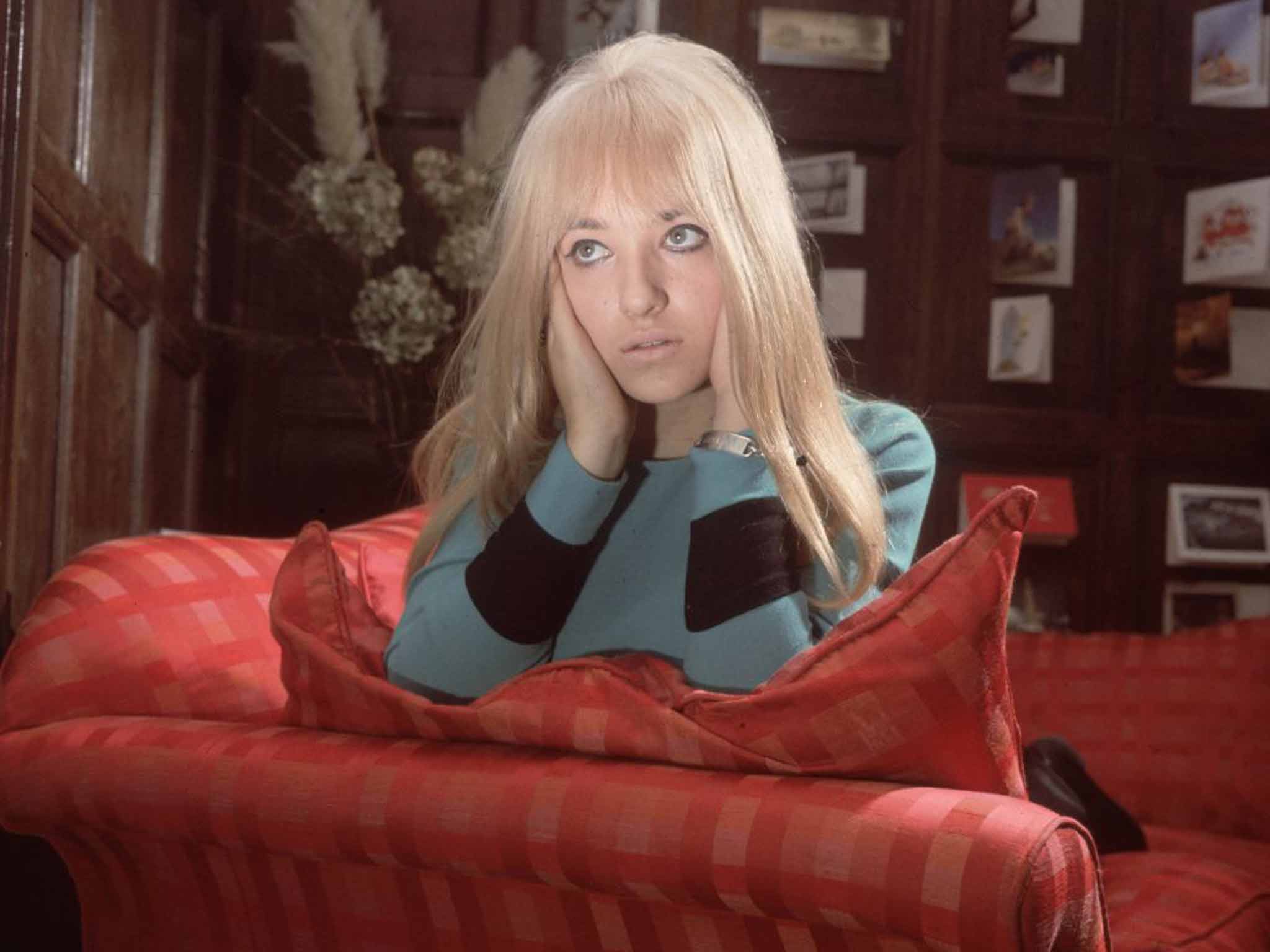Twinkle: Pop star and Swinging London personality best known for 'Terry', her 1964 ode to a doomed biker
She toured with the Rolling Stones and attended the Queen's Gate School in Kensington where a fellow pupil and friend was Camilla Parker Bowles

In 1964, 16-year-old Lynn Ripley would watch the motorbike riders on the Dorking bypass and long to be with them. She was motivated to write "Terry", a song about a biker who died in a crash – and although it made No 4, it was highly controversial and banned from ITV's teenage programme Ready Steady Go! Lord Ted Willis, the creator of Dixon of Dock Green, called it "dangerous drivel". "Terry" was joined in the charts by the Shangri-las' "Leader of the Pack", a death disc with a similar story.
Lynn Ripley had a privileged upbringing in Surbiton. Her father, Sydney, was a printer and Conservative politician, who served on the Greater London Council. When she was born in 1948, her sister Dawn called her "Twinkle", a name which stuck throughout her life. She showed signs of being a gifted pianist but she didn't pursue it. She attended the Queen's Gate School in Kensington, where a fellow pupil and friend was Camilla Parker Bowles.
Working as Dawn James, her sister wrote for teenage magazines like Mirabelle and Rave and she introduced Twinkle to Dec Cluskey of the Bachelors. They dated and he played her songs to his management team, Phil and Dorothy Solomon. They arranged for her to record "Terry" with the pianist/arranger Phil Coulter and the producer Tommy Scott. The guitarists on the record were Jimmy Page and Big Jim Sullivan.
Despite accusations of bad taste, few could ignore the compelling title line, "Please wait at the gate of heaven for me, Terry." With their contacts, the Solomons obtained heavy rotation on the pirate station Radio Caroline – and soon "Terry" was a major hit and Twinkle was touring with the Rolling Stones.
Her follow-up, "Golden Lights", was about going out with a pop star. It fell short of the Top 20, but it had its followers and was revived by the Smiths in 1986. Unfortunately, Scott preferred Twinkle to record his own songs (Twinkle once acknowledged, "I had a talent for songwriting and I wish I had used it...") – but he and Bill Martin did write an acceptable English version of a Eurovision winner, "Poupée De Cire, Poupée De Son", the work of Serge Gainsbourg. It was put on an EP as "A Lonely Singing Doll", but it deserved to be promoted as a single. Twinkle covered Reparata and the Delrons' "Tommy" and Skeeter Davis's "End of the World".
After dating Brian Jones, Paul and Barry Ryan, and Peter Noone, Twinkle settled with a male model, Michael Hannah. In 1969 she recorded a Motown-style song about him, "Micky", which was produced by Mike d'Abo, but their relationship was tempestuous, and she was admitted to hospital after attempting suicide.
In 1973, Hannah encouraged Twinkle to record new material; but he was killed in the Paris air disaster of 1974. The album, with the title Michael Hannah: The Lost Years, was eventually released in 2003 and told of their relationship. Twinkle married their mutual friend, Graham Rogers, a model who was better known as the Milk Tray Man.
In 1996 Twinkle made a half-hearted attempt to return to performing on an ill-conceived touring package featuring Denny Laine and John Lennon's first wife, Cynthia, and the Four Pennies.
Lynne Annette Ripley (Twinkle), singer and songwriter: born Surbiton 15 July 1948; married 1972 Graham Rogers (one son, one daughter); died 21 May 2015.
Join our commenting forum
Join thought-provoking conversations, follow other Independent readers and see their replies
Comments